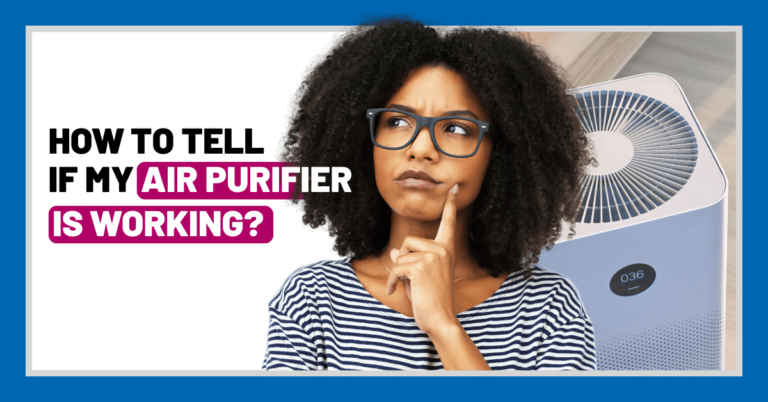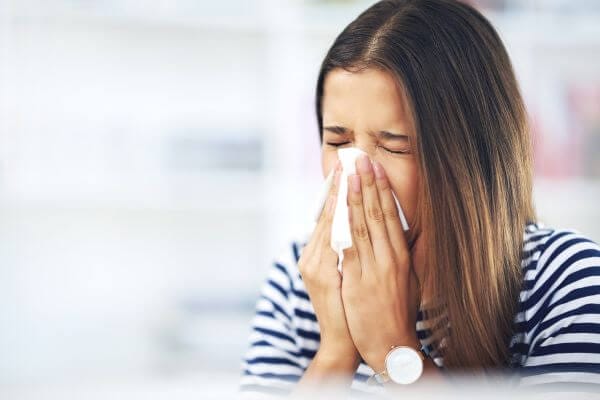
How To Tell if an Air Purifier Is Working?
by Karl von Luckwald / January 16, 2024
Air purifier brands claim to filter up to 99.9% of pollutants.
That’s amazing. But have you ever seen a virus with the naked eye? A PM2.5 pollution particle? An allergen?
Me neither!
The vast majority of air pollutants are invisible. So how can we verify if an air purifier is working properly or not?
The good news is that it’s possible to test if an air purifier is doing the job. However, different pollutants require different approaches. This article will explain how to check if an air purifier is sufficiently removing
How To Check if My Air Purifiers Filters PM2.5
If you want to check if an air purifier is properly filtering PM2.5 you have to test this with an indoor air quality monitor.
Yes, many air purifiers come with built-in sensors. However, tests have shown that they are widely inaccurate.
Firstly, they are made of mediocre quality. Secondly, built-in air quality monitors only measure the air right around the air purifier. Obviously, air quality is always best there.

But we want to find out if indoor air quality is great everywhere, right? This only works, if you place a separate indoor air quality monitor far away from your air purifier.
Troubleshooting Your Air Purifier
If the air quality at the end of the room is great, you can be sure that the air purifier is doing a good job. Does the monitor display high readings, you should do the following:
The average HEPA filter lasts 6-24 months depending on the usage and air pollution. If you have used it for much longer, it might the time to buy a replacement.
Some air purifiers have filter replacement indicators, but I wouldn’t trust them.
In areas with less pollution, HEPA filters often last longer than the suggested replacement times. If your HEPA filter isn’t entirely black, it’s likely still in good working condition.

Alright, should your HEPA filter still be usable and your air purifier is already on full blast, yet the air quality isn’t improving, the issue might be that the purifier isn’t powerful enough to cover your room size.
To check on this, look at the CADR rating (Clean Air Delivery Rate) on the sticker at the back of your air purifier.
Read more: Find the best air purifiers of the year
The Importance of CADR
The CADR rating indicates the volume of air your purifier can clean per hour. The higher the number, the stronger the machine. CADR helps you to determine whether your air filter is strong enough for your space.
For rooms up to 30 square meters, a CADR of 100 to 250 cubic meters per hour is sufficient.
If your room is between 20 and 40 square meters, choose an air purifier with a CADR of 250 to 400 cubic meters per hour.
For areas between 40 and 60 square meters, an air filter with a CADR of 400 to 600 cubic meters per hour is needed.
CADR (Clean Air Delivery Rate) is the most important number for air purifiers.
How To Tell if an Air Purifier Is Working Against Smoke
Smoke consists of a mixture of tiny particles and gases, many of which are small enough to be categorized as PM2.5.
To ensure your air purifier is effectively tackling smoke problems in your room, you can use the same methods as those recommended for dealing with PM2.5.
Consider Carbon Filters Additional Smoke Protection
Additionally, for enhanced smoke filtration, look for air purifiers with activated carbon filters. These are particularly effective at absorbing gaseous components, such as the volatile organic compounds (VOCs) and odors that accompany smoke.
I recommend using a combination of both HEPA and Carbon filters to improve indoor air quality if you’re concerned about smoke.

Checking if My Air Purifier Is Trapping Viruses
HEPA air purifiers are able to trap viruses. That’s the good news. The bad news is, checking if your air purifier is working properly at filtering viruses, is much more tricky. Your air quality monitor won’t display any virus load in the atmosphere, thus we have to find a different way.
After checking some official guidelines, I came across this document by the WHO. The World Health Organization recommends 6-12 air changes per hour to sufficiently filter out viruses. (p.5)
But how do we achieve this?
Calculating Air Changes per Hour (ACH)
To calculate Air Changes per Hour (ACH) with your air purifier, first check its CADR (Clean Air Delivery Rate) number. If the CADR is given in cubic meters per hour (m³/hr), simply divide it by the total volume (m³) of your room.

If the CADR is stated in cubic feet per minute (cfm), multiply it by 60 and then divide it by the room volume in cubic meters (m³).

This calculation will give you the number of air changes per hour.
For instance, if your air purifier’s CADR is 350 m³/hr and your room volume is 100 m³, the air changes per hour would be 3.5 (350 ÷ 100).
In this case, your air purifier would not be strong enough to meet the WHO guidelines. Thus, you’d either need to put another one into your space or buy a stronger unit.
How To Check if My Air Purifier Is Filtering Out Allergens?
To determine whether your air purifier is successfully removing allergens and pollen, rely on the practical test: symptom relief. If you notice a decrease in allergy symptoms, it’s a good sign that your air filter is effective.
However, if your symptoms continue, apply the same troubleshooting methods used for PM2.5: ensure the HEPA filter is intact, the purifier is operating at maximum capacity, and it’s suitable for the size of your room.

How To Find Out if My Air Purifiers Is Absorbing TVOCs
HEPA filters are great at capturing solid pollutants like PM2.5, mold spores, pet dander, pollen, bacteria, and viruses, but they can’t remove TVOCs from the air.
TVOCs (Total Volatile Compounds) are chemicals found in many daily products like paints, cleaning detergents, or even factory-new furniture.
To remove TVOCs (Total Volatile Organic Compounds), you need an air purifier with a Carbon filter. These filters use activated charcoal to soak up TVOCs from the air, and many air purifiers already have them.
To check if your air purifier is effectively removing TVOCs, use an air quality monitor that has a TVOC sensor. This sensor will show higher readings if it detects volatile compounds in your area.
However, these sensors can’t tell the difference between safe and harmful chemicals. For example, they’ll react to both an orange peel or white wine and dangerous chemicals like formaldehyde.

If the TVOC reading is under 1 mg/m³, your air purifier is doing its job. If it’s higher, you might need to replace the Carbon filter or open a window to improve air quality.
Bottom Line
To verify your air purifier’s effectiveness, use external air quality monitors for pollutants like PM2.5, smoke, allergens, and TVOCs. For viruses, since monitors can’t detect them, follow the WHO’s guideline of 6-12 air changes per hour. Check your purifier’s CADR rating for room suitability and maintain HEPA and Carbon filters regularly for optimal performance.
FAQ’s

Karl von Luckwald
Since moving to Thailand in 2019, Karl noticed the lack of scientific integrity in air purifier and water filter reviews. In response, he founded WE DO AIR to champion unbiased, science-based evaluations and empower consumers to make better-informed decisions.
